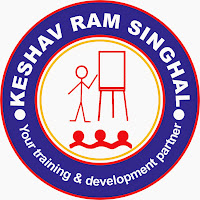One of the new requirements of ISO 9001:2015 QMS standard is to show evidence of risk-based thinking (RBT) in the quality management system. How organization will do that? How to respond to the new challenges that ISO 9001:2015 QMS standard requires? People in the organization are facing with these questions.
ISO 9001:2015 QMS standard does not call for formal methods for managing risk. An organization is free to choose its method(s) to address risks and opportunities. Risk management is an increasingly important business driver these days and stakeholders, particularly customers, have become more concerned about risk. A risk-based thinking (RBT) enables an organization to consider the potential impact of all types of risks and opportunities on all processes, activities, products and services. Implementing a comprehensive approach to RBT will result in an organization benefiting from the actions taken to address risks and opportunities.
ISO 31000:2018 is an standard that describes risk management - guidelines. IEC 31010:2019 is an standard that describes risk management - risk assessment techniques. ISO Guide 73:2009 provides risk management - vocabulary. One may turn to ISO 31000:2018 and IEC 31010:2019 standards, but it is not as easy as it looks. There are many guidelines and techniques to choose from and many may be too complicated and not easy to implement. ISO 9001:2015 QMS standard does not require implementation of ISO 31000:2018 standard or application of IEC 31010:2019, however study of these standards may benefit each individual to understand risk management in a better way.
We will provide the necessary inputs on risk-based thinking (RBT) and risk assessment techniques in forthcoming articles, that may be applied to a quality management system. In the forthcoming articles, a simple method to determine risks and opportunities will be mentioned that can be followed for demonstrating risk-based thinking as required by ISO 9001:2015 QMS standard. This trainer has also prepared a seven-eight-hour vocational training, which can be conducted at your campus, for which you can contact this trainer. If you want to learn risk-based thinking and risk assessment techniques from home, you can also get training through WhatsApp or email.
By attending the training, a participant will be able to understand:
- Concept of risk-based thinking,
- ISO 9001:2015 QMS requirements related to risk-based thinking,
- Benefits of using risk-based thinking,
- An overview of various risk assessment tools - Techniques and methodologies that you may apply in your QMS,
- Using risk-based thinking to achieve better internal controls,
- Demonstrating risk-based thinking during audits (internal and external).
At the end of the training, an assessment questionnaire will be provided, so that your learning can be evaluated.
- Keshav Ram Singhal
Email -
krsinghal@rediffmail.com
keshavsinghalajmer@gmail.com

How did you like this article, please let us know your comments. Thank you.
ISO 9001: 2015 QMS Awareness related articles are aimed at spreading awareness on ISO 9001: 2015 QMS. These articles should not be used as an alternative to the ISO 9001: 2015 QMS standard. To implement the quality management system in an organization, one should also use ISO 9001: 2015 QMS standard, which you can get from the International Organization for Standardization (ISO) or its national member institution ('Bureau of Indian Standards' in India).
No comments:
Post a Comment